-
EXECUTIVE SUMMARY
-
Market Overview
-
Key Findings
-
Market Segmentation
-
Competitive Landscape
-
Challenges and Opportunities
-
Future Outlook
-
MARKET INTRODUCTION
-
Definition
-
Scope of the study
-
Research Objective
-
Assumption
-
Limitations
-
RESEARCH METHODOLOGY
-
Overview
-
Data Mining
-
Secondary Research
-
Primary Research
-
Primary Interviews and Information Gathering Process
-
Breakdown of Primary Respondents
-
Forecasting Model
-
Market Size Estimation
-
Bottom-Up Approach
-
Top-Down Approach
-
Data Triangulation
-
Validation
-
MARKET DYNAMICS
-
Overview
-
Drivers
-
Restraints
-
Opportunities
-
MARKET FACTOR ANALYSIS
-
Value chain Analysis
-
Porter's Five Forces Analysis
-
Bargaining Power of Suppliers
-
Bargaining Power of Buyers
-
Threat of New Entrants
-
Threat of Substitutes
-
Intensity of Rivalry
-
COVID-19 Impact Analysis
-
Market Impact Analysis
-
Regional Impact
-
Opportunity and Threat Analysis
-
Food Allergy Diagnosis and Treatment Market, BY Diagnosis Method (USD Billion)
-
Skin Prick Test
-
Blood Test
-
Oral Food Challenge
-
Elimination Diet
-
Food Allergy Diagnosis and Treatment Market, BY Treatment Type (USD Billion)
-
Medication
-
Immunotherapy
-
Dietary Management
-
Emergency Treatment Devices
-
Food Allergy Diagnosis and Treatment Market, BY End User (USD Billion)
-
Hospitals
-
Clinics
-
Home Care
-
Pharmaceutical Companies
-
Food Allergy Diagnosis and Treatment Market, BY Age Group (USD Billion)
-
Children
-
Adults
-
Elderly
-
Food Allergy Diagnosis and Treatment Market, BY Regional (USD Billion)
-
North America
-
US
-
Canada
-
Europe
-
Germany
-
UK
-
France
-
Russia
-
Italy
-
Spain
-
Rest of Europe
-
APAC
-
China
-
India
-
Japan
-
South Korea
-
Malaysia
-
Thailand
-
Indonesia
-
Rest of APAC
-
South America
-
Brazil
-
Mexico
-
Argentina
-
Rest of South America
-
MEA
-
GCC Countries
-
South Africa
-
Rest of MEA
-
Competitive Landscape
-
Overview
-
Competitive Analysis
-
Market share Analysis
-
Major Growth Strategy in the Food Allergy Diagnosis and Treatment Market
-
Competitive Benchmarking
-
Leading Players in Terms of Number of Developments in the Food Allergy Diagnosis and Treatment Market
-
Key developments and growth strategies
-
New Product Launch/Service Deployment
-
Merger & Acquisitions
-
Joint Ventures
-
Major Players Financial Matrix
-
Sales and Operating Income
-
Major Players R&D Expenditure. 2023
-
Company Profiles
-
Horizon Therapeutics
-
Financial Overview
-
Products Offered
-
Key Developments
-
SWOT Analysis
-
Key Strategies
-
Abbott Laboratories
-
Financial Overview
-
Products Offered
-
Key Developments
-
SWOT Analysis
-
Key Strategies
-
Danone
-
Financial Overview
-
Products Offered
-
Key Developments
-
SWOT Analysis
-
Key Strategies
-
Thermo Fisher Scientific
-
Financial Overview
-
Products Offered
-
Key Developments
-
SWOT Analysis
-
Key Strategies
-
Unilever
-
Financial Overview
-
Products Offered
-
Key Developments
-
SWOT Analysis
-
Key Strategies
-
Aimmune Therapeutics
-
Financial Overview
-
Products Offered
-
Key Developments
-
SWOT Analysis
-
Key Strategies
-
Nestle
-
Financial Overview
-
Products Offered
-
Key Developments
-
SWOT Analysis
-
Key Strategies
-
PepsiCo
-
Financial Overview
-
Products Offered
-
Key Developments
-
SWOT Analysis
-
Key Strategies
-
Boehringer Ingelheim
-
Financial Overview
-
Products Offered
-
Key Developments
-
SWOT Analysis
-
Key Strategies
-
OneGroup
-
Financial Overview
-
Products Offered
-
Key Developments
-
SWOT Analysis
-
Key Strategies
-
Mylan
-
Financial Overview
-
Products Offered
-
Key Developments
-
SWOT Analysis
-
Key Strategies
-
Eurofins Scientific
-
Financial Overview
-
Products Offered
-
Key Developments
-
SWOT Analysis
-
Key Strategies
-
DBV Technologies
-
Financial Overview
-
Products Offered
-
Key Developments
-
SWOT Analysis
-
Key Strategies
-
Allergenes
-
Financial Overview
-
Products Offered
-
Key Developments
-
SWOT Analysis
-
Key Strategies
-
Medimmune
-
Financial Overview
-
Products Offered
-
Key Developments
-
SWOT Analysis
-
Key Strategies
-
Appendix
-
References
-
Related Reports
-
LIST Of tables
-
LIST OF ASSUMPTIONS
-
North America Food Allergy Diagnosis and Treatment Market SIZE ESTIMATES & FORECAST, BY DIAGNOSIS METHOD, 2019-2035 (USD Billions)
-
North America Food Allergy Diagnosis and Treatment Market SIZE ESTIMATES & FORECAST, BY TREATMENT TYPE, 2019-2035 (USD Billions)
-
North America Food Allergy Diagnosis and Treatment Market SIZE ESTIMATES & FORECAST, BY END USER, 2019-2035 (USD Billions)
-
North America Food Allergy Diagnosis and Treatment Market SIZE ESTIMATES & FORECAST, BY AGE GROUP, 2019-2035 (USD Billions)
-
North America Food Allergy Diagnosis and Treatment Market SIZE ESTIMATES & FORECAST, BY REGIONAL, 2019-2035 (USD Billions)
-
US Food Allergy Diagnosis and Treatment Market SIZE ESTIMATES & FORECAST, BY DIAGNOSIS METHOD, 2019-2035 (USD Billions)
-
US Food Allergy Diagnosis and Treatment Market SIZE ESTIMATES & FORECAST, BY TREATMENT TYPE, 2019-2035 (USD Billions)
-
US Food Allergy Diagnosis and Treatment Market SIZE ESTIMATES & FORECAST, BY END USER, 2019-2035 (USD Billions)
-
US Food Allergy Diagnosis and Treatment Market SIZE ESTIMATES & FORECAST, BY AGE GROUP, 2019-2035 (USD Billions)
-
US Food Allergy Diagnosis and Treatment Market SIZE ESTIMATES & FORECAST, BY REGIONAL, 2019-2035 (USD Billions)
-
Canada Food Allergy Diagnosis and Treatment Market SIZE ESTIMATES & FORECAST, BY DIAGNOSIS METHOD, 2019-2035 (USD Billions)
-
Canada Food Allergy Diagnosis and Treatment Market SIZE ESTIMATES & FORECAST, BY TREATMENT TYPE, 2019-2035 (USD Billions)
-
Canada Food Allergy Diagnosis and Treatment Market SIZE ESTIMATES & FORECAST, BY END USER, 2019-2035 (USD Billions)
-
Canada Food Allergy Diagnosis and Treatment Market SIZE ESTIMATES & FORECAST, BY AGE GROUP, 2019-2035 (USD Billions)
-
Canada Food Allergy Diagnosis and Treatment Market SIZE ESTIMATES & FORECAST, BY REGIONAL, 2019-2035 (USD Billions)
-
Europe Food Allergy Diagnosis and Treatment Market SIZE ESTIMATES & FORECAST, BY DIAGNOSIS METHOD, 2019-2035 (USD Billions)
-
Europe Food Allergy Diagnosis and Treatment Market SIZE ESTIMATES & FORECAST, BY TREATMENT TYPE, 2019-2035 (USD Billions)
-
Europe Food Allergy Diagnosis and Treatment Market SIZE ESTIMATES & FORECAST, BY END USER, 2019-2035 (USD Billions)
-
Europe Food Allergy Diagnosis and Treatment Market SIZE ESTIMATES & FORECAST, BY AGE GROUP, 2019-2035 (USD Billions)
-
Europe Food Allergy Diagnosis and Treatment Market SIZE ESTIMATES & FORECAST, BY REGIONAL, 2019-2035 (USD Billions)
-
Germany Food Allergy Diagnosis and Treatment Market SIZE ESTIMATES & FORECAST, BY DIAGNOSIS METHOD, 2019-2035 (USD Billions)
-
Germany Food Allergy Diagnosis and Treatment Market SIZE ESTIMATES & FORECAST, BY TREATMENT TYPE, 2019-2035 (USD Billions)
-
Germany Food Allergy Diagnosis and Treatment Market SIZE ESTIMATES & FORECAST, BY END USER, 2019-2035 (USD Billions)
-
Germany Food Allergy Diagnosis and Treatment Market SIZE ESTIMATES & FORECAST, BY AGE GROUP, 2019-2035 (USD Billions)
-
Germany Food Allergy Diagnosis and Treatment Market SIZE ESTIMATES & FORECAST, BY REGIONAL, 2019-2035 (USD Billions)
-
UK Food Allergy Diagnosis and Treatment Market SIZE ESTIMATES & FORECAST, BY DIAGNOSIS METHOD, 2019-2035 (USD Billions)
-
UK Food Allergy Diagnosis and Treatment Market SIZE ESTIMATES & FORECAST, BY TREATMENT TYPE, 2019-2035 (USD Billions)
-
UK Food Allergy Diagnosis and Treatment Market SIZE ESTIMATES & FORECAST, BY END USER, 2019-2035 (USD Billions)
-
UK Food Allergy Diagnosis and Treatment Market SIZE ESTIMATES & FORECAST, BY AGE GROUP, 2019-2035 (USD Billions)
-
UK Food Allergy Diagnosis and Treatment Market SIZE ESTIMATES & FORECAST, BY REGIONAL, 2019-2035 (USD Billions)
-
France Food Allergy Diagnosis and Treatment Market SIZE ESTIMATES & FORECAST, BY DIAGNOSIS METHOD, 2019-2035 (USD Billions)
-
France Food Allergy Diagnosis and Treatment Market SIZE ESTIMATES & FORECAST, BY TREATMENT TYPE, 2019-2035 (USD Billions)
-
France Food Allergy Diagnosis and Treatment Market SIZE ESTIMATES & FORECAST, BY END USER, 2019-2035 (USD Billions)
-
France Food Allergy Diagnosis and Treatment Market SIZE ESTIMATES & FORECAST, BY AGE GROUP, 2019-2035 (USD Billions)
-
France Food Allergy Diagnosis and Treatment Market SIZE ESTIMATES & FORECAST, BY REGIONAL, 2019-2035 (USD Billions)
-
Russia Food Allergy Diagnosis and Treatment Market SIZE ESTIMATES & FORECAST, BY DIAGNOSIS METHOD, 2019-2035 (USD Billions)
-
Russia Food Allergy Diagnosis and Treatment Market SIZE ESTIMATES & FORECAST, BY TREATMENT TYPE, 2019-2035 (USD Billions)
-
Russia Food Allergy Diagnosis and Treatment Market SIZE ESTIMATES & FORECAST, BY END USER, 2019-2035 (USD Billions)
-
Russia Food Allergy Diagnosis and Treatment Market SIZE ESTIMATES & FORECAST, BY AGE GROUP, 2019-2035 (USD Billions)
-
Russia Food Allergy Diagnosis and Treatment Market SIZE ESTIMATES & FORECAST, BY REGIONAL, 2019-2035 (USD Billions)
-
Italy Food Allergy Diagnosis and Treatment Market SIZE ESTIMATES & FORECAST, BY DIAGNOSIS METHOD, 2019-2035 (USD Billions)
-
Italy Food Allergy Diagnosis and Treatment Market SIZE ESTIMATES & FORECAST, BY TREATMENT TYPE, 2019-2035 (USD Billions)
-
Italy Food Allergy Diagnosis and Treatment Market SIZE ESTIMATES & FORECAST, BY END USER, 2019-2035 (USD Billions)
-
Italy Food Allergy Diagnosis and Treatment Market SIZE ESTIMATES & FORECAST, BY AGE GROUP, 2019-2035 (USD Billions)
-
Italy Food Allergy Diagnosis and Treatment Market SIZE ESTIMATES & FORECAST, BY REGIONAL, 2019-2035 (USD Billions)
-
Spain Food Allergy Diagnosis and Treatment Market SIZE ESTIMATES & FORECAST, BY DIAGNOSIS METHOD, 2019-2035 (USD Billions)
-
Spain Food Allergy Diagnosis and Treatment Market SIZE ESTIMATES & FORECAST, BY TREATMENT TYPE, 2019-2035 (USD Billions)
-
Spain Food Allergy Diagnosis and Treatment Market SIZE ESTIMATES & FORECAST, BY END USER, 2019-2035 (USD Billions)
-
Spain Food Allergy Diagnosis and Treatment Market SIZE ESTIMATES & FORECAST, BY AGE GROUP, 2019-2035 (USD Billions)
-
Spain Food Allergy Diagnosis and Treatment Market SIZE ESTIMATES & FORECAST, BY REGIONAL, 2019-2035 (USD Billions)
-
Rest of Europe Food Allergy Diagnosis and Treatment Market SIZE ESTIMATES & FORECAST, BY DIAGNOSIS METHOD, 2019-2035 (USD Billions)
-
Rest of Europe Food Allergy Diagnosis and Treatment Market SIZE ESTIMATES & FORECAST, BY TREATMENT TYPE, 2019-2035 (USD Billions)
-
Rest of Europe Food Allergy Diagnosis and Treatment Market SIZE ESTIMATES & FORECAST, BY END USER, 2019-2035 (USD Billions)
-
Rest of Europe Food Allergy Diagnosis and Treatment Market SIZE ESTIMATES & FORECAST, BY AGE GROUP, 2019-2035 (USD Billions)
-
Rest of Europe Food Allergy Diagnosis and Treatment Market SIZE ESTIMATES & FORECAST, BY REGIONAL, 2019-2035 (USD Billions)
-
APAC Food Allergy Diagnosis and Treatment Market SIZE ESTIMATES & FORECAST, BY DIAGNOSIS METHOD, 2019-2035 (USD Billions)
-
APAC Food Allergy Diagnosis and Treatment Market SIZE ESTIMATES & FORECAST, BY TREATMENT TYPE, 2019-2035 (USD Billions)
-
APAC Food Allergy Diagnosis and Treatment Market SIZE ESTIMATES & FORECAST, BY END USER, 2019-2035 (USD Billions)
-
APAC Food Allergy Diagnosis and Treatment Market SIZE ESTIMATES & FORECAST, BY AGE GROUP, 2019-2035 (USD Billions)
-
APAC Food Allergy Diagnosis and Treatment Market SIZE ESTIMATES & FORECAST, BY REGIONAL, 2019-2035 (USD Billions)
-
China Food Allergy Diagnosis and Treatment Market SIZE ESTIMATES & FORECAST, BY DIAGNOSIS METHOD, 2019-2035 (USD Billions)
-
China Food Allergy Diagnosis and Treatment Market SIZE ESTIMATES & FORECAST, BY TREATMENT TYPE, 2019-2035 (USD Billions)
-
China Food Allergy Diagnosis and Treatment Market SIZE ESTIMATES & FORECAST, BY END USER, 2019-2035 (USD Billions)
-
China Food Allergy Diagnosis and Treatment Market SIZE ESTIMATES & FORECAST, BY AGE GROUP, 2019-2035 (USD Billions)
-
China Food Allergy Diagnosis and Treatment Market SIZE ESTIMATES & FORECAST, BY REGIONAL, 2019-2035 (USD Billions)
-
India Food Allergy Diagnosis and Treatment Market SIZE ESTIMATES & FORECAST, BY DIAGNOSIS METHOD, 2019-2035 (USD Billions)
-
India Food Allergy Diagnosis and Treatment Market SIZE ESTIMATES & FORECAST, BY TREATMENT TYPE, 2019-2035 (USD Billions)
-
India Food Allergy Diagnosis and Treatment Market SIZE ESTIMATES & FORECAST, BY END USER, 2019-2035 (USD Billions)
-
India Food Allergy Diagnosis and Treatment Market SIZE ESTIMATES & FORECAST, BY AGE GROUP, 2019-2035 (USD Billions)
-
India Food Allergy Diagnosis and Treatment Market SIZE ESTIMATES & FORECAST, BY REGIONAL, 2019-2035 (USD Billions)
-
Japan Food Allergy Diagnosis and Treatment Market SIZE ESTIMATES & FORECAST, BY DIAGNOSIS METHOD, 2019-2035 (USD Billions)
-
Japan Food Allergy Diagnosis and Treatment Market SIZE ESTIMATES & FORECAST, BY TREATMENT TYPE, 2019-2035 (USD Billions)
-
Japan Food Allergy Diagnosis and Treatment Market SIZE ESTIMATES & FORECAST, BY END USER, 2019-2035 (USD Billions)
-
Japan Food Allergy Diagnosis and Treatment Market SIZE ESTIMATES & FORECAST, BY AGE GROUP, 2019-2035 (USD Billions)
-
Japan Food Allergy Diagnosis and Treatment Market SIZE ESTIMATES & FORECAST, BY REGIONAL, 2019-2035 (USD Billions)
-
South Korea Food Allergy Diagnosis and Treatment Market SIZE ESTIMATES & FORECAST, BY DIAGNOSIS METHOD, 2019-2035 (USD Billions)
-
South Korea Food Allergy Diagnosis and Treatment Market SIZE ESTIMATES & FORECAST, BY TREATMENT TYPE, 2019-2035 (USD Billions)
-
South Korea Food Allergy Diagnosis and Treatment Market SIZE ESTIMATES & FORECAST, BY END USER, 2019-2035 (USD Billions)
-
South Korea Food Allergy Diagnosis and Treatment Market SIZE ESTIMATES & FORECAST, BY AGE GROUP, 2019-2035 (USD Billions)
-
South Korea Food Allergy Diagnosis and Treatment Market SIZE ESTIMATES & FORECAST, BY REGIONAL, 2019-2035 (USD Billions)
-
Malaysia Food Allergy Diagnosis and Treatment Market SIZE ESTIMATES & FORECAST, BY DIAGNOSIS METHOD, 2019-2035 (USD Billions)
-
Malaysia Food Allergy Diagnosis and Treatment Market SIZE ESTIMATES & FORECAST, BY TREATMENT TYPE, 2019-2035 (USD Billions)
-
Malaysia Food Allergy Diagnosis and Treatment Market SIZE ESTIMATES & FORECAST, BY END USER, 2019-2035 (USD Billions)
-
Malaysia Food Allergy Diagnosis and Treatment Market SIZE ESTIMATES & FORECAST, BY AGE GROUP, 2019-2035 (USD Billions)
-
Malaysia Food Allergy Diagnosis and Treatment Market SIZE ESTIMATES & FORECAST, BY REGIONAL, 2019-2035 (USD Billions)
-
Thailand Food Allergy Diagnosis and Treatment Market SIZE ESTIMATES & FORECAST, BY DIAGNOSIS METHOD, 2019-2035 (USD Billions)
-
Thailand Food Allergy Diagnosis and Treatment Market SIZE ESTIMATES & FORECAST, BY TREATMENT TYPE, 2019-2035 (USD Billions)
-
Thailand Food Allergy Diagnosis and Treatment Market SIZE ESTIMATES & FORECAST, BY END USER, 2019-2035 (USD Billions)
-
Thailand Food Allergy Diagnosis and Treatment Market SIZE ESTIMATES & FORECAST, BY AGE GROUP, 2019-2035 (USD Billions)
-
Thailand Food Allergy Diagnosis and Treatment Market SIZE ESTIMATES & FORECAST, BY REGIONAL, 2019-2035 (USD Billions)
-
Indonesia Food Allergy Diagnosis and Treatment Market SIZE ESTIMATES & FORECAST, BY DIAGNOSIS METHOD, 2019-2035 (USD Billions)
-
Indonesia Food Allergy Diagnosis and Treatment Market SIZE ESTIMATES & FORECAST, BY TREATMENT TYPE, 2019-2035 (USD Billions)
-
Indonesia Food Allergy Diagnosis and Treatment Market SIZE ESTIMATES & FORECAST, BY END USER, 2019-2035 (USD Billions)
-
Indonesia Food Allergy Diagnosis and Treatment Market SIZE ESTIMATES & FORECAST, BY AGE GROUP, 2019-2035 (USD Billions)
-
Indonesia Food Allergy Diagnosis and Treatment Market SIZE ESTIMATES & FORECAST, BY REGIONAL, 2019-2035 (USD Billions)
-
Rest of APAC Food Allergy Diagnosis and Treatment Market SIZE ESTIMATES & FORECAST, BY DIAGNOSIS METHOD, 2019-2035 (USD Billions)
-
Rest of APAC Food Allergy Diagnosis and Treatment Market SIZE ESTIMATES & FORECAST, BY TREATMENT TYPE, 2019-2035 (USD Billions)
-
Rest of APAC Food Allergy Diagnosis and Treatment Market SIZE ESTIMATES & FORECAST, BY END USER, 2019-2035 (USD Billions)
-
Rest of APAC Food Allergy Diagnosis and Treatment Market SIZE ESTIMATES & FORECAST, BY AGE GROUP, 2019-2035 (USD Billions)
-
Rest of APAC Food Allergy Diagnosis and Treatment Market SIZE ESTIMATES & FORECAST, BY REGIONAL, 2019-2035 (USD Billions)
-
South America Food Allergy Diagnosis and Treatment Market SIZE ESTIMATES & FORECAST, BY DIAGNOSIS METHOD, 2019-2035 (USD Billions)
-
South America Food Allergy Diagnosis and Treatment Market SIZE ESTIMATES & FORECAST, BY TREATMENT TYPE, 2019-2035 (USD Billions)
-
South America Food Allergy Diagnosis and Treatment Market SIZE ESTIMATES & FORECAST, BY END USER, 2019-2035 (USD Billions)
-
South America Food Allergy Diagnosis and Treatment Market SIZE ESTIMATES & FORECAST, BY AGE GROUP, 2019-2035 (USD Billions)
-
South America Food Allergy Diagnosis and Treatment Market SIZE ESTIMATES & FORECAST, BY REGIONAL, 2019-2035 (USD Billions)
-
Brazil Food Allergy Diagnosis and Treatment Market SIZE ESTIMATES & FORECAST, BY DIAGNOSIS METHOD, 2019-2035 (USD Billions)
-
Brazil Food Allergy Diagnosis and Treatment Market SIZE ESTIMATES & FORECAST, BY TREATMENT TYPE, 2019-2035 (USD Billions)
-
Brazil Food Allergy Diagnosis and Treatment Market SIZE ESTIMATES & FORECAST, BY END USER, 2019-2035 (USD Billions)
-
Brazil Food Allergy Diagnosis and Treatment Market SIZE ESTIMATES & FORECAST, BY AGE GROUP, 2019-2035 (USD Billions)
-
Brazil Food Allergy Diagnosis and Treatment Market SIZE ESTIMATES & FORECAST, BY REGIONAL, 2019-2035 (USD Billions)
-
Mexico Food Allergy Diagnosis and Treatment Market SIZE ESTIMATES & FORECAST, BY DIAGNOSIS METHOD, 2019-2035 (USD Billions)
-
Mexico Food Allergy Diagnosis and Treatment Market SIZE ESTIMATES & FORECAST, BY TREATMENT TYPE, 2019-2035 (USD Billions)
-
Mexico Food Allergy Diagnosis and Treatment Market SIZE ESTIMATES & FORECAST, BY END USER, 2019-2035 (USD Billions)
-
Mexico Food Allergy Diagnosis and Treatment Market SIZE ESTIMATES & FORECAST, BY AGE GROUP, 2019-2035 (USD Billions)
-
Mexico Food Allergy Diagnosis and Treatment Market SIZE ESTIMATES & FORECAST, BY REGIONAL, 2019-2035 (USD Billions)
-
Argentina Food Allergy Diagnosis and Treatment Market SIZE ESTIMATES & FORECAST, BY DIAGNOSIS METHOD, 2019-2035 (USD Billions)
-
Argentina Food Allergy Diagnosis and Treatment Market SIZE ESTIMATES & FORECAST, BY TREATMENT TYPE, 2019-2035 (USD Billions)
-
Argentina Food Allergy Diagnosis and Treatment Market SIZE ESTIMATES & FORECAST, BY END USER, 2019-2035 (USD Billions)
-
Argentina Food Allergy Diagnosis and Treatment Market SIZE ESTIMATES & FORECAST, BY AGE GROUP, 2019-2035 (USD Billions)
-
Argentina Food Allergy Diagnosis and Treatment Market SIZE ESTIMATES & FORECAST, BY REGIONAL, 2019-2035 (USD Billions)
-
Rest of South America Food Allergy Diagnosis and Treatment Market SIZE ESTIMATES & FORECAST, BY DIAGNOSIS METHOD, 2019-2035 (USD Billions)
-
Rest of South America Food Allergy Diagnosis and Treatment Market SIZE ESTIMATES & FORECAST, BY TREATMENT TYPE, 2019-2035 (USD Billions)
-
Rest of South America Food Allergy Diagnosis and Treatment Market SIZE ESTIMATES & FORECAST, BY END USER, 2019-2035 (USD Billions)
-
Rest of South America Food Allergy Diagnosis and Treatment Market SIZE ESTIMATES & FORECAST, BY AGE GROUP, 2019-2035 (USD Billions)
-
Rest of South America Food Allergy Diagnosis and Treatment Market SIZE ESTIMATES & FORECAST, BY REGIONAL, 2019-2035 (USD Billions)
-
MEA Food Allergy Diagnosis and Treatment Market SIZE ESTIMATES & FORECAST, BY DIAGNOSIS METHOD, 2019-2035 (USD Billions)
-
MEA Food Allergy Diagnosis and Treatment Market SIZE ESTIMATES & FORECAST, BY TREATMENT TYPE, 2019-2035 (USD Billions)
-
MEA Food Allergy Diagnosis and Treatment Market SIZE ESTIMATES & FORECAST, BY END USER, 2019-2035 (USD Billions)
-
MEA Food Allergy Diagnosis and Treatment Market SIZE ESTIMATES & FORECAST, BY AGE GROUP, 2019-2035 (USD Billions)
-
MEA Food Allergy Diagnosis and Treatment Market SIZE ESTIMATES & FORECAST, BY REGIONAL, 2019-2035 (USD Billions)
-
GCC Countries Food Allergy Diagnosis and Treatment Market SIZE ESTIMATES & FORECAST, BY DIAGNOSIS METHOD, 2019-2035 (USD Billions)
-
GCC Countries Food Allergy Diagnosis and Treatment Market SIZE ESTIMATES & FORECAST, BY TREATMENT TYPE, 2019-2035 (USD Billions)
-
GCC Countries Food Allergy Diagnosis and Treatment Market SIZE ESTIMATES & FORECAST, BY END USER, 2019-2035 (USD Billions)
-
GCC Countries Food Allergy Diagnosis and Treatment Market SIZE ESTIMATES & FORECAST, BY AGE GROUP, 2019-2035 (USD Billions)
-
GCC Countries Food Allergy Diagnosis and Treatment Market SIZE ESTIMATES & FORECAST, BY REGIONAL, 2019-2035 (USD Billions)
-
South Africa Food Allergy Diagnosis and Treatment Market SIZE ESTIMATES & FORECAST, BY DIAGNOSIS METHOD, 2019-2035 (USD Billions)
-
South Africa Food Allergy Diagnosis and Treatment Market SIZE ESTIMATES & FORECAST, BY TREATMENT TYPE, 2019-2035 (USD Billions)
-
South Africa Food Allergy Diagnosis and Treatment Market SIZE ESTIMATES & FORECAST, BY END USER, 2019-2035 (USD Billions)
-
South Africa Food Allergy Diagnosis and Treatment Market SIZE ESTIMATES & FORECAST, BY AGE GROUP, 2019-2035 (USD Billions)
-
South Africa Food Allergy Diagnosis and Treatment Market SIZE ESTIMATES & FORECAST, BY REGIONAL, 2019-2035 (USD Billions)
-
Rest of MEA Food Allergy Diagnosis and Treatment Market SIZE ESTIMATES & FORECAST, BY DIAGNOSIS METHOD, 2019-2035 (USD Billions)
-
Rest of MEA Food Allergy Diagnosis and Treatment Market SIZE ESTIMATES & FORECAST, BY TREATMENT TYPE, 2019-2035 (USD Billions)
-
Rest of MEA Food Allergy Diagnosis and Treatment Market SIZE ESTIMATES & FORECAST, BY END USER, 2019-2035 (USD Billions)
-
Rest of MEA Food Allergy Diagnosis and Treatment Market SIZE ESTIMATES & FORECAST, BY AGE GROUP, 2019-2035 (USD Billions)
-
Rest of MEA Food Allergy Diagnosis and Treatment Market SIZE ESTIMATES & FORECAST, BY REGIONAL, 2019-2035 (USD Billions)
-
PRODUCT LAUNCH/PRODUCT DEVELOPMENT/APPROVAL
-
ACQUISITION/PARTNERSHIP
-
LIST Of figures
-
MARKET SYNOPSIS
-
NORTH AMERICA FOOD ALLERGY DIAGNOSIS AND TREATMENT MARKET ANALYSIS
-
US FOOD ALLERGY DIAGNOSIS AND TREATMENT MARKET ANALYSIS BY DIAGNOSIS METHOD
-
US FOOD ALLERGY DIAGNOSIS AND TREATMENT MARKET ANALYSIS BY TREATMENT TYPE
-
US FOOD ALLERGY DIAGNOSIS AND TREATMENT MARKET ANALYSIS BY END USER
-
US FOOD ALLERGY DIAGNOSIS AND TREATMENT MARKET ANALYSIS BY AGE GROUP
-
US FOOD ALLERGY DIAGNOSIS AND TREATMENT MARKET ANALYSIS BY REGIONAL
-
CANADA FOOD ALLERGY DIAGNOSIS AND TREATMENT MARKET ANALYSIS BY DIAGNOSIS METHOD
-
CANADA FOOD ALLERGY DIAGNOSIS AND TREATMENT MARKET ANALYSIS BY TREATMENT TYPE
-
CANADA FOOD ALLERGY DIAGNOSIS AND TREATMENT MARKET ANALYSIS BY END USER
-
CANADA FOOD ALLERGY DIAGNOSIS AND TREATMENT MARKET ANALYSIS BY AGE GROUP
-
CANADA FOOD ALLERGY DIAGNOSIS AND TREATMENT MARKET ANALYSIS BY REGIONAL
-
EUROPE FOOD ALLERGY DIAGNOSIS AND TREATMENT MARKET ANALYSIS
-
GERMANY FOOD ALLERGY DIAGNOSIS AND TREATMENT MARKET ANALYSIS BY DIAGNOSIS METHOD
-
GERMANY FOOD ALLERGY DIAGNOSIS AND TREATMENT MARKET ANALYSIS BY TREATMENT TYPE
-
GERMANY FOOD ALLERGY DIAGNOSIS AND TREATMENT MARKET ANALYSIS BY END USER
-
GERMANY FOOD ALLERGY DIAGNOSIS AND TREATMENT MARKET ANALYSIS BY AGE GROUP
-
GERMANY FOOD ALLERGY DIAGNOSIS AND TREATMENT MARKET ANALYSIS BY REGIONAL
-
UK FOOD ALLERGY DIAGNOSIS AND TREATMENT MARKET ANALYSIS BY DIAGNOSIS METHOD
-
UK FOOD ALLERGY DIAGNOSIS AND TREATMENT MARKET ANALYSIS BY TREATMENT TYPE
-
UK FOOD ALLERGY DIAGNOSIS AND TREATMENT MARKET ANALYSIS BY END USER
-
UK FOOD ALLERGY DIAGNOSIS AND TREATMENT MARKET ANALYSIS BY AGE GROUP
-
UK FOOD ALLERGY DIAGNOSIS AND TREATMENT MARKET ANALYSIS BY REGIONAL
-
FRANCE FOOD ALLERGY DIAGNOSIS AND TREATMENT MARKET ANALYSIS BY DIAGNOSIS METHOD
-
FRANCE FOOD ALLERGY DIAGNOSIS AND TREATMENT MARKET ANALYSIS BY TREATMENT TYPE
-
FRANCE FOOD ALLERGY DIAGNOSIS AND TREATMENT MARKET ANALYSIS BY END USER
-
FRANCE FOOD ALLERGY DIAGNOSIS AND TREATMENT MARKET ANALYSIS BY AGE GROUP
-
FRANCE FOOD ALLERGY DIAGNOSIS AND TREATMENT MARKET ANALYSIS BY REGIONAL
-
RUSSIA FOOD ALLERGY DIAGNOSIS AND TREATMENT MARKET ANALYSIS BY DIAGNOSIS METHOD
-
RUSSIA FOOD ALLERGY DIAGNOSIS AND TREATMENT MARKET ANALYSIS BY TREATMENT TYPE
-
RUSSIA FOOD ALLERGY DIAGNOSIS AND TREATMENT MARKET ANALYSIS BY END USER
-
RUSSIA FOOD ALLERGY DIAGNOSIS AND TREATMENT MARKET ANALYSIS BY AGE GROUP
-
RUSSIA FOOD ALLERGY DIAGNOSIS AND TREATMENT MARKET ANALYSIS BY REGIONAL
-
ITALY FOOD ALLERGY DIAGNOSIS AND TREATMENT MARKET ANALYSIS BY DIAGNOSIS METHOD
-
ITALY FOOD ALLERGY DIAGNOSIS AND TREATMENT MARKET ANALYSIS BY TREATMENT TYPE
-
ITALY FOOD ALLERGY DIAGNOSIS AND TREATMENT MARKET ANALYSIS BY END USER
-
ITALY FOOD ALLERGY DIAGNOSIS AND TREATMENT MARKET ANALYSIS BY AGE GROUP
-
ITALY FOOD ALLERGY DIAGNOSIS AND TREATMENT MARKET ANALYSIS BY REGIONAL
-
SPAIN FOOD ALLERGY DIAGNOSIS AND TREATMENT MARKET ANALYSIS BY DIAGNOSIS METHOD
-
SPAIN FOOD ALLERGY DIAGNOSIS AND TREATMENT MARKET ANALYSIS BY TREATMENT TYPE
-
SPAIN FOOD ALLERGY DIAGNOSIS AND TREATMENT MARKET ANALYSIS BY END USER
-
SPAIN FOOD ALLERGY DIAGNOSIS AND TREATMENT MARKET ANALYSIS BY AGE GROUP
-
SPAIN FOOD ALLERGY DIAGNOSIS AND TREATMENT MARKET ANALYSIS BY REGIONAL
-
REST OF EUROPE FOOD ALLERGY DIAGNOSIS AND TREATMENT MARKET ANALYSIS BY DIAGNOSIS METHOD
-
REST OF EUROPE FOOD ALLERGY DIAGNOSIS AND TREATMENT MARKET ANALYSIS BY TREATMENT TYPE
-
REST OF EUROPE FOOD ALLERGY DIAGNOSIS AND TREATMENT MARKET ANALYSIS BY END USER
-
REST OF EUROPE FOOD ALLERGY DIAGNOSIS AND TREATMENT MARKET ANALYSIS BY AGE GROUP
-
REST OF EUROPE FOOD ALLERGY DIAGNOSIS AND TREATMENT MARKET ANALYSIS BY REGIONAL
-
APAC FOOD ALLERGY DIAGNOSIS AND TREATMENT MARKET ANALYSIS
-
CHINA FOOD ALLERGY DIAGNOSIS AND TREATMENT MARKET ANALYSIS BY DIAGNOSIS METHOD
-
CHINA FOOD ALLERGY DIAGNOSIS AND TREATMENT MARKET ANALYSIS BY TREATMENT TYPE
-
CHINA FOOD ALLERGY DIAGNOSIS AND TREATMENT MARKET ANALYSIS BY END USER
-
CHINA FOOD ALLERGY DIAGNOSIS AND TREATMENT MARKET ANALYSIS BY AGE GROUP
-
CHINA FOOD ALLERGY DIAGNOSIS AND TREATMENT MARKET ANALYSIS BY REGIONAL
-
INDIA FOOD ALLERGY DIAGNOSIS AND TREATMENT MARKET ANALYSIS BY DIAGNOSIS METHOD
-
INDIA FOOD ALLERGY DIAGNOSIS AND TREATMENT MARKET ANALYSIS BY TREATMENT TYPE
-
INDIA FOOD ALLERGY DIAGNOSIS AND TREATMENT MARKET ANALYSIS BY END USER
-
INDIA FOOD ALLERGY DIAGNOSIS AND TREATMENT MARKET ANALYSIS BY AGE GROUP
-
INDIA FOOD ALLERGY DIAGNOSIS AND TREATMENT MARKET ANALYSIS BY REGIONAL
-
JAPAN FOOD ALLERGY DIAGNOSIS AND TREATMENT MARKET ANALYSIS BY DIAGNOSIS METHOD
-
JAPAN FOOD ALLERGY DIAGNOSIS AND TREATMENT MARKET ANALYSIS BY TREATMENT TYPE
-
JAPAN FOOD ALLERGY DIAGNOSIS AND TREATMENT MARKET ANALYSIS BY END USER
-
JAPAN FOOD ALLERGY DIAGNOSIS AND TREATMENT MARKET ANALYSIS BY AGE GROUP
-
JAPAN FOOD ALLERGY DIAGNOSIS AND TREATMENT MARKET ANALYSIS BY REGIONAL
-
SOUTH KOREA FOOD ALLERGY DIAGNOSIS AND TREATMENT MARKET ANALYSIS BY DIAGNOSIS METHOD
-
SOUTH KOREA FOOD ALLERGY DIAGNOSIS AND TREATMENT MARKET ANALYSIS BY TREATMENT TYPE
-
SOUTH KOREA FOOD ALLERGY DIAGNOSIS AND TREATMENT MARKET ANALYSIS BY END USER
-
SOUTH KOREA FOOD ALLERGY DIAGNOSIS AND TREATMENT MARKET ANALYSIS BY AGE GROUP
-
SOUTH KOREA FOOD ALLERGY DIAGNOSIS AND TREATMENT MARKET ANALYSIS BY REGIONAL
-
MALAYSIA FOOD ALLERGY DIAGNOSIS AND TREATMENT MARKET ANALYSIS BY DIAGNOSIS METHOD
-
MALAYSIA FOOD ALLERGY DIAGNOSIS AND TREATMENT MARKET ANALYSIS BY TREATMENT TYPE
-
MALAYSIA FOOD ALLERGY DIAGNOSIS AND TREATMENT MARKET ANALYSIS BY END USER
-
MALAYSIA FOOD ALLERGY DIAGNOSIS AND TREATMENT MARKET ANALYSIS BY AGE GROUP
-
MALAYSIA FOOD ALLERGY DIAGNOSIS AND TREATMENT MARKET ANALYSIS BY REGIONAL
-
THAILAND FOOD ALLERGY DIAGNOSIS AND TREATMENT MARKET ANALYSIS BY DIAGNOSIS METHOD
-
THAILAND FOOD ALLERGY DIAGNOSIS AND TREATMENT MARKET ANALYSIS BY TREATMENT TYPE
-
THAILAND FOOD ALLERGY DIAGNOSIS AND TREATMENT MARKET ANALYSIS BY END USER
-
THAILAND FOOD ALLERGY DIAGNOSIS AND TREATMENT MARKET ANALYSIS BY AGE GROUP
-
THAILAND FOOD ALLERGY DIAGNOSIS AND TREATMENT MARKET ANALYSIS BY REGIONAL
-
INDONESIA FOOD ALLERGY DIAGNOSIS AND TREATMENT MARKET ANALYSIS BY DIAGNOSIS METHOD
-
INDONESIA FOOD ALLERGY DIAGNOSIS AND TREATMENT MARKET ANALYSIS BY TREATMENT TYPE
-
INDONESIA FOOD ALLERGY DIAGNOSIS AND TREATMENT MARKET ANALYSIS BY END USER
-
INDONESIA FOOD ALLERGY DIAGNOSIS AND TREATMENT MARKET ANALYSIS BY AGE GROUP
-
INDONESIA FOOD ALLERGY DIAGNOSIS AND TREATMENT MARKET ANALYSIS BY REGIONAL
-
REST OF APAC FOOD ALLERGY DIAGNOSIS AND TREATMENT MARKET ANALYSIS BY DIAGNOSIS METHOD
-
REST OF APAC FOOD ALLERGY DIAGNOSIS AND TREATMENT MARKET ANALYSIS BY TREATMENT TYPE
-
REST OF APAC FOOD ALLERGY DIAGNOSIS AND TREATMENT MARKET ANALYSIS BY END USER
-
REST OF APAC FOOD ALLERGY DIAGNOSIS AND TREATMENT MARKET ANALYSIS BY AGE GROUP
-
REST OF APAC FOOD ALLERGY DIAGNOSIS AND TREATMENT MARKET ANALYSIS BY REGIONAL
-
SOUTH AMERICA FOOD ALLERGY DIAGNOSIS AND TREATMENT MARKET ANALYSIS
-
BRAZIL FOOD ALLERGY DIAGNOSIS AND TREATMENT MARKET ANALYSIS BY DIAGNOSIS METHOD
-
BRAZIL FOOD ALLERGY DIAGNOSIS AND TREATMENT MARKET ANALYSIS BY TREATMENT TYPE
-
BRAZIL FOOD ALLERGY DIAGNOSIS AND TREATMENT MARKET ANALYSIS BY END USER
-
BRAZIL FOOD ALLERGY DIAGNOSIS AND TREATMENT MARKET ANALYSIS BY AGE GROUP
-
BRAZIL FOOD ALLERGY DIAGNOSIS AND TREATMENT MARKET ANALYSIS BY REGIONAL
-
MEXICO FOOD ALLERGY DIAGNOSIS AND TREATMENT MARKET ANALYSIS BY DIAGNOSIS METHOD
-
MEXICO FOOD ALLERGY DIAGNOSIS AND TREATMENT MARKET ANALYSIS BY TREATMENT TYPE
-
MEXICO FOOD ALLERGY DIAGNOSIS AND TREATMENT MARKET ANALYSIS BY END USER
-
MEXICO FOOD ALLERGY DIAGNOSIS AND TREATMENT MARKET ANALYSIS BY AGE GROUP
-
MEXICO FOOD ALLERGY DIAGNOSIS AND TREATMENT MARKET ANALYSIS BY REGIONAL
-
ARGENTINA FOOD ALLERGY DIAGNOSIS AND TREATMENT MARKET ANALYSIS BY DIAGNOSIS METHOD
-
ARGENTINA FOOD ALLERGY DIAGNOSIS AND TREATMENT MARKET ANALYSIS BY TREATMENT TYPE
-
ARGENTINA FOOD ALLERGY DIAGNOSIS AND TREATMENT MARKET ANALYSIS BY END USER
-
ARGENTINA FOOD ALLERGY DIAGNOSIS AND TREATMENT MARKET ANALYSIS BY AGE GROUP
-
ARGENTINA FOOD ALLERGY DIAGNOSIS AND TREATMENT MARKET ANALYSIS BY REGIONAL
-
REST OF SOUTH AMERICA FOOD ALLERGY DIAGNOSIS AND TREATMENT MARKET ANALYSIS BY DIAGNOSIS METHOD
-
REST OF SOUTH AMERICA FOOD ALLERGY DIAGNOSIS AND TREATMENT MARKET ANALYSIS BY TREATMENT TYPE
-
REST OF SOUTH AMERICA FOOD ALLERGY DIAGNOSIS AND TREATMENT MARKET ANALYSIS BY END USER
-
REST OF SOUTH AMERICA FOOD ALLERGY DIAGNOSIS AND TREATMENT MARKET ANALYSIS BY AGE GROUP
-
REST OF SOUTH AMERICA FOOD ALLERGY DIAGNOSIS AND TREATMENT MARKET ANALYSIS BY REGIONAL
-
MEA FOOD ALLERGY DIAGNOSIS AND TREATMENT MARKET ANALYSIS
-
GCC COUNTRIES FOOD ALLERGY DIAGNOSIS AND TREATMENT MARKET ANALYSIS BY DIAGNOSIS METHOD
-
GCC COUNTRIES FOOD ALLERGY DIAGNOSIS AND TREATMENT MARKET ANALYSIS BY TREATMENT TYPE
-
GCC COUNTRIES FOOD ALLERGY DIAGNOSIS AND TREATMENT MARKET ANALYSIS BY END USER
-
GCC COUNTRIES FOOD ALLERGY DIAGNOSIS AND TREATMENT MARKET ANALYSIS BY AGE GROUP
-
GCC COUNTRIES FOOD ALLERGY DIAGNOSIS AND TREATMENT MARKET ANALYSIS BY REGIONAL
-
SOUTH AFRICA FOOD ALLERGY DIAGNOSIS AND TREATMENT MARKET ANALYSIS BY DIAGNOSIS METHOD
-
SOUTH AFRICA FOOD ALLERGY DIAGNOSIS AND TREATMENT MARKET ANALYSIS BY TREATMENT TYPE
-
SOUTH AFRICA FOOD ALLERGY DIAGNOSIS AND TREATMENT MARKET ANALYSIS BY END USER
-
SOUTH AFRICA FOOD ALLERGY DIAGNOSIS AND TREATMENT MARKET ANALYSIS BY AGE GROUP
-
SOUTH AFRICA FOOD ALLERGY DIAGNOSIS AND TREATMENT MARKET ANALYSIS BY REGIONAL
-
REST OF MEA FOOD ALLERGY DIAGNOSIS AND TREATMENT MARKET ANALYSIS BY DIAGNOSIS METHOD
-
REST OF MEA FOOD ALLERGY DIAGNOSIS AND TREATMENT MARKET ANALYSIS BY TREATMENT TYPE
-
REST OF MEA FOOD ALLERGY DIAGNOSIS AND TREATMENT MARKET ANALYSIS BY END USER
-
REST OF MEA FOOD ALLERGY DIAGNOSIS AND TREATMENT MARKET ANALYSIS BY AGE GROUP
-
REST OF MEA FOOD ALLERGY DIAGNOSIS AND TREATMENT MARKET ANALYSIS BY REGIONAL
-
KEY BUYING CRITERIA OF FOOD ALLERGY DIAGNOSIS AND TREATMENT MARKET
-
RESEARCH PROCESS OF MRFR
-
DRO ANALYSIS OF FOOD ALLERGY DIAGNOSIS AND TREATMENT MARKET
-
DRIVERS IMPACT ANALYSIS: FOOD ALLERGY DIAGNOSIS AND TREATMENT MARKET
-
RESTRAINTS IMPACT ANALYSIS: FOOD ALLERGY DIAGNOSIS AND TREATMENT MARKET
-
SUPPLY / VALUE CHAIN: FOOD ALLERGY DIAGNOSIS AND TREATMENT MARKET
-
FOOD ALLERGY DIAGNOSIS AND TREATMENT MARKET, BY DIAGNOSIS METHOD, 2025 (% SHARE)
-
FOOD ALLERGY DIAGNOSIS AND TREATMENT MARKET, BY DIAGNOSIS METHOD, 2019 TO 2035 (USD Billions)
-
FOOD ALLERGY DIAGNOSIS AND TREATMENT MARKET, BY TREATMENT TYPE, 2025 (% SHARE)
-
FOOD ALLERGY DIAGNOSIS AND TREATMENT MARKET, BY TREATMENT TYPE, 2019 TO 2035 (USD Billions)
-
FOOD ALLERGY DIAGNOSIS AND TREATMENT MARKET, BY END USER, 2025 (% SHARE)
-
FOOD ALLERGY DIAGNOSIS AND TREATMENT MARKET, BY END USER, 2019 TO 2035 (USD Billions)
-
FOOD ALLERGY DIAGNOSIS AND TREATMENT MARKET, BY AGE GROUP, 2025 (% SHARE)
-
FOOD ALLERGY DIAGNOSIS AND TREATMENT MARKET, BY AGE GROUP, 2019 TO 2035 (USD Billions)
-
FOOD ALLERGY DIAGNOSIS AND TREATMENT MARKET, BY REGIONAL, 2025 (% SHARE)
-
FOOD ALLERGY DIAGNOSIS AND TREATMENT MARKET, BY REGIONAL, 2019 TO 2035 (USD Billions)
-
BENCHMARKING OF MAJOR COMPETITORS

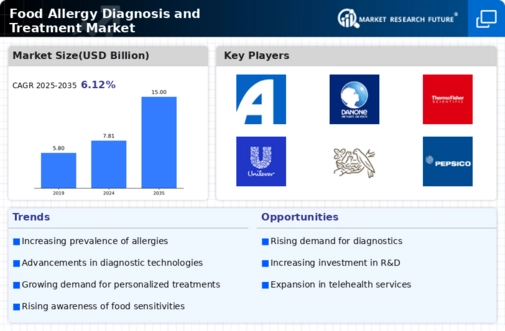
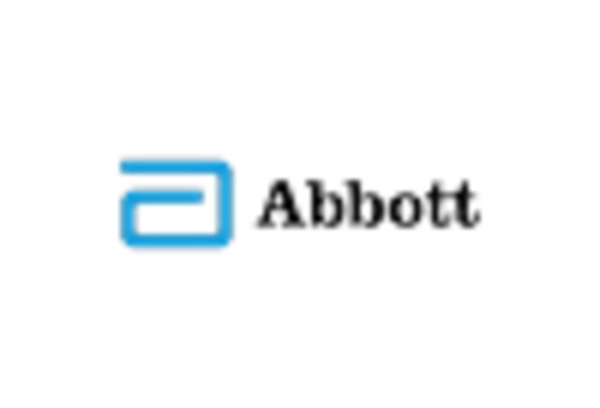
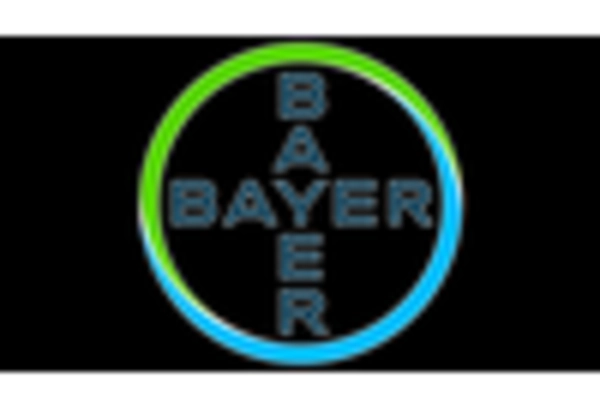
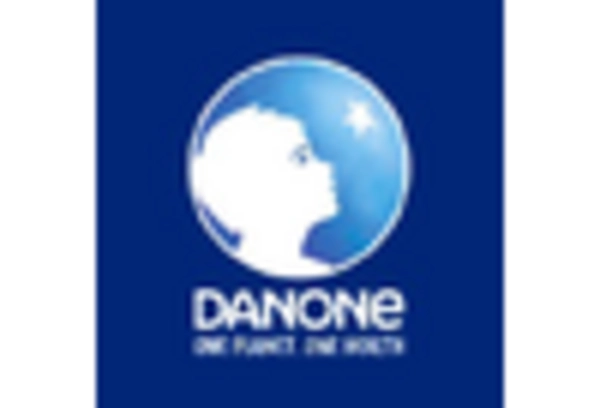
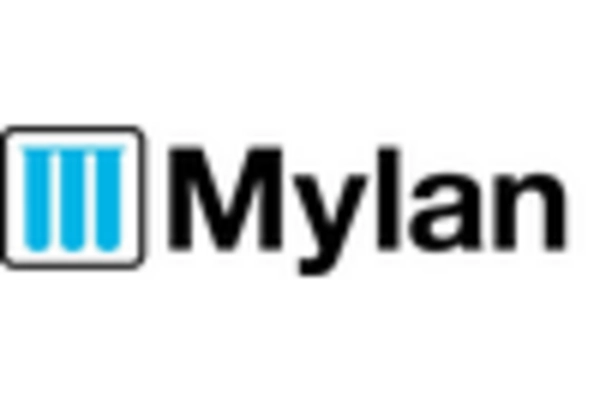
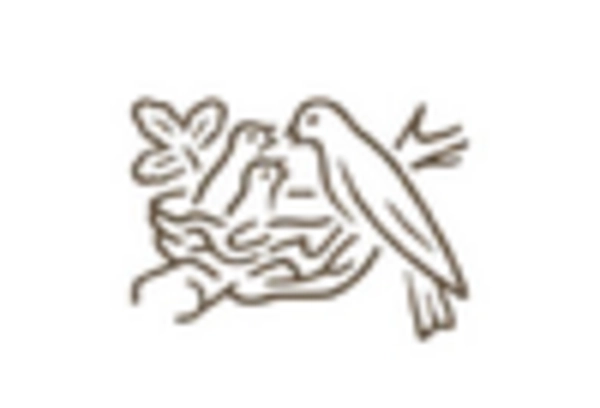
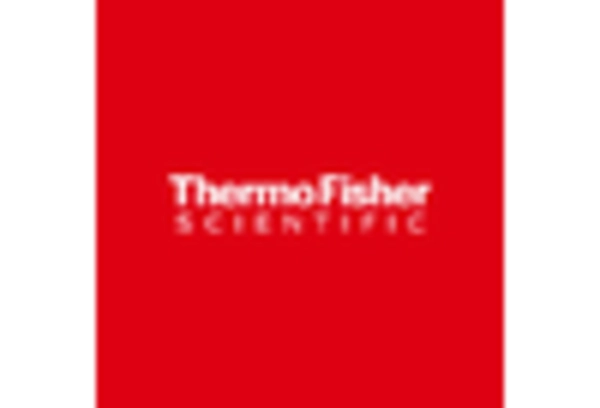









Leave a Comment